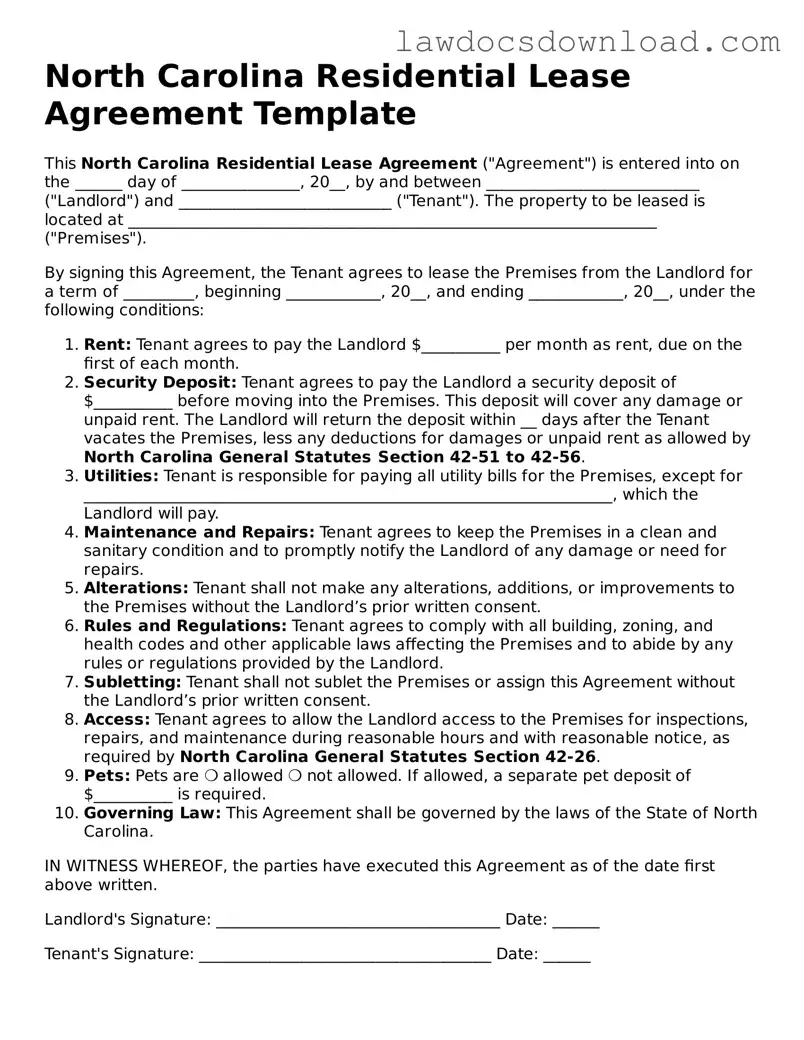One common mistake made when filling out a North Carolina Residential Lease Agreement form is not including all the tenants' names. Every adult living in the rental unit should be listed as a tenant, ensuring they are legally responsible for following the terms of the lease. This omission can lead to difficulties in enforcing lease terms if disputes arise with individuals who are not listed on the agreement.
Another error is failing to specify the lease term clearly. Whether the agreement is for a fixed term, such as one year, or on a month-to-month basis, it should be explicitly stated. This clarity helps prevent misunderstandings about when the tenant is expected to vacate the property or renew the agreement. Without a clear lease term, disputes about termination dates and renewals can occur.
Often, details regarding the security deposit are overlooked or inaccurately recorded. The amount, purpose, and conditions for the return of the security deposit must be clearly outlined. This includes any non-refundable fees. Neglecting these details can lead to disagreements at the end of the tenancy over deductions from the deposit for damages or cleaning.
Not specifying the maintenance responsibilities can also lead to problems. The lease should clearly divide the responsibilities between the landlord and tenant, such as who takes care of landscaping, minor repairs, and major maintenance issues. Without this, there might be confusion and conflict over who is responsible for maintaining the property in good condition.
A crucial detail that is sometimes missed is the rules regarding subletting and assignment of the lease. The lease should state whether the tenant has the right to sublet the property and under what conditions. Failure to address this can result in unauthorized occupants without the landlord's consent.
Another frequently seen mistake is not including a detailed inventory of fixtures and appliances provided with the rental. This list should include the condition of each item at the beginning of the tenancy to avoid disputes over damages or missing items when the tenant moves out.
Omitting clauses about late fees and consequences of default is another oversight. The lease should outline the late fee policy and the steps the landlord will take if the tenant fails to pay rent on time or breaches other terms of the lease. Clear consequences help ensure timely payments and compliance with the lease terms.
Furthermore, many forget to specify the conditions under which the landlord may enter the rental property. North Carolina law requires landlords to provide notice before entering, except in emergencies. The lease should detail the circumstances and notice period to respect the tenant's privacy and comply with legal requirements.
Last but not least, failing to document the condition of the property at move-in is a critical misstep. Both parties should conduct a walkthrough of the property and note any existing damages. This record protects the tenant from being held responsible for pre-existing conditions and assists in the accurate return of the security deposit.
